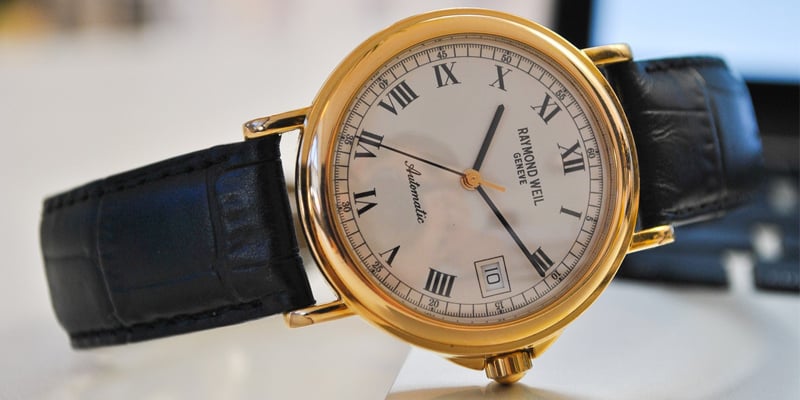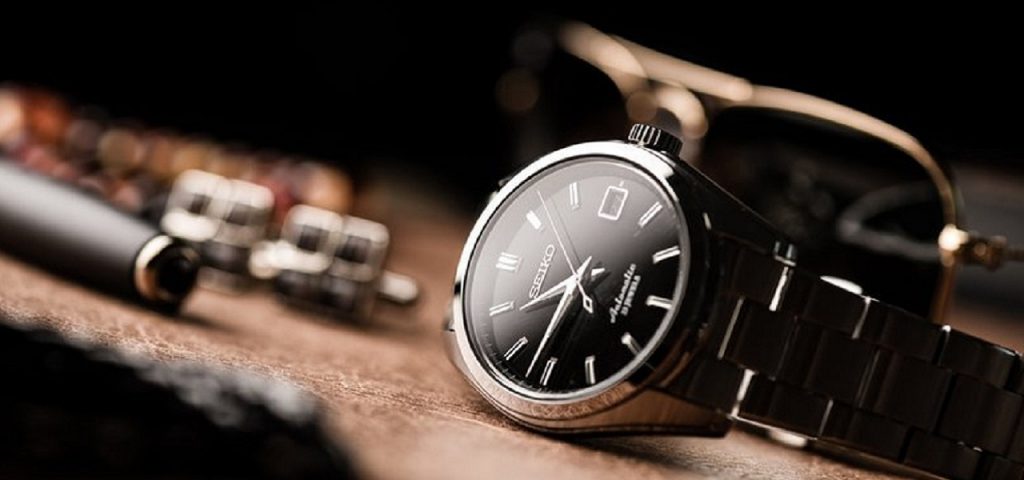NeshNYC is reader-supported, meaning we get a small commission if you decide to make a purchase through our links, at no cost to you. Read the full disclosure here.
You don’t have to be an expert in rocket technology to know how to wind up your watch! In fact, to wind a watch is a fairly easy task. Yet, there are a few peculiarities of winding up mechanical watches (manual wind up watches), which you may find to be perplexing. This guide will familiarize you with the proper way to wind your watch.
The bottom line is – Your timepiece should keep ticking! In this guide, we will go over the steps of how to wind a watch correctly, so that it keeps ticking.
To start with, you should understand the concept of ‘the movement’ or ‘caliber’ (the heart of a watch). It is what makes the watch tick. Movement drives the hands on the watch face and powers its inbuilt features like calendar, dual time zone, and chronograph. There are three types of movement: Quartz, Mechanical, and Automatic.
A Quartz watch is powered with a battery; the second hand moves in the motion of individual ticks. Mechanical watches need manual winding to operate; the second hand moves in a smooth sweeping motion. Finally, in automatic watches, the inside mechanism is triggered on by transference of kinetic energy from the wearer’s wrist.

If you’ve ruled out Quartz as your watch’s movement type, you must now be wondering two things, and perhaps a third. First, how to hand wind a watch? Which is why you stumbled upon this article in the first place. Second, just out of curiosity, what happens when I remove my automatic watch from my wrist? Lastly, why are we talking about Quartz watches here!
Let’s answer these questions in reverse order.
Firstly, Quartz or modern battery operated watches are the most popular due to convenience. So how can we not mention them! The more enthusiastic you become about watches, the more inclined you’ll be towards buying vintage or hand-wound watches, requiring you to become an expert in watch winding.
Secondly, automatic watches (self-winding watches) usually don’t have to be wound. The natural motion of the wearer provides enough energy to power the watch. Once removed from your wrist (or while you’re asleep) the charge will keep the watch on for up to 38 hours. Rolex “perpetual-movement” watches stay wound for 48 hours when not being worn. After that time (38-48 hours depending on the watch), it will run out of charge and stop. It would then have to be initiated again by manual winding. So yes, there is some role of winding in automatic watches too!

To watch lovers, the mechanical watch is a culmination of art and science, that requires their regular effort to keep it preserved. Mechanical (manual movement) watches are powered through their spring mechanism.
Now let’s cut to the chase! Here are the steps for winding a watch.
Step 1: Unstrap the watch and remove it from your wrist – Always take off your watch at the time of winding it. Trying to wind while it’s on your wrist can place it in an awkward angle, causing strain on the delicate mechanisms inside. Winding while it’s worn can also force-pull the crown out, or cause you to “overwind”.
Step 2: Don’t wind the watch when it’s from 9 PM to 2 AM – Visually you’ll see the date changing over at the stroke of midnight. Yet, during these five hours, the date-change mechanism engages the gear train. Thus, you risk damaging the delicate teeth of the mechanism if you set or wind your watch during those hours.
Step 3: Hold the watch at a vertical position on the palm of your left hand – There’s a small dial on the side of the watch called a stem. The top of the stem is called the ” crown”. The stem can be pulled out by gripping the crown with your thumb and index finger to wind the watch; set the time, alarm, calendar, or dual time zone. The type of setting desired to be changed is selectable at little “clicks” as you pull the stem out or push it in. Using trial and error you can select through the clicks and ultimately come to the winding position.
Step 4: Begin winding the crown. The watch hands should move clockwise for a number of revolutions – In effect, you are rotating the crown away from you until you feel resistance.
Step 5: Keep winding slowly for 20-40 complete revolutions (depending on watch model), without interrupting, until the tension begins to increase – Once you feel the resistance, it means your watch is properly wound. Do not wind past resistance, that may damage the mechanism. Carefully press the crown back into its “zero” position (original position). Next, gently screw the crown down to water-tight position.
How to Wind an Automatic Movement Watch
Step 1: Check the packaging details or punch in the serial number online – Appearance wise an automatic movement watch is thicker than a manual movement watch. However, it’s wise to either check the packaging or online (using the product serial number), to know your watch better. Find out how long the particular watch model will stay powered on, before losing wind, when not worn regularly. Usually, an automatic movement watch will operate for a long time.
Step 2: Follow above steps 1-5 of how to wind a mechanical (manual movement watch) watch – An automatic movement watch is similar to a manual movement watch. Other than the fact that the former is powered by a rotor, which maintains the watch’s energy. As mentioned earlier, depending on the specific watch model, an automatic watch has a maximum power reserve of 38-48 hours once removed from your wrist. Beyond this power reserve limit, it loses charge and stops. That’s when winding steps need to be carried out.
Let's wind it up!
Whether you’re a vintage mechanical watch collector, or a new owner, admit it, you initially forgot to wind it up! The sooner you learn to make winding a daily ritual upon waking up, the better.
A mechanical manual movement watch is, even today, one of the most trustworthy personal devices one can own.
Remember to keep your mechanical watch clean, routinely wound, and away from getting wet. This way it’ll never go obsolete, and one day at your old age you can proudly show it off as your vintage watch.
Respect your watch, and your watch will get you respect!


